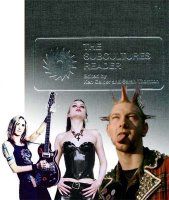 We live in a culture right? Wrong. Even among sociologists there is debate about what culture really means. From Wikipedia, we can take a broad view:
We live in a culture right? Wrong. Even among sociologists there is debate about what culture really means. From Wikipedia, we can take a broad view: Sir Edward B. Tylor wrote in 1871 that "culture or civilization, taken in its wide ethnographic sense, is that complex whole which includes knowledge, belief, art, morals, law, custom, and any other capabilities and habits acquired by man as a member of society."
Public Relations is about conversations with people in a common cultural setting. Here, I attempt to show how one might identify the culture and norms in communication that apply to such conversations.
Where extensive sociological research has been carried out on audiences, it has often been concluded that the ways media are used can depend upon social or cultural position.
A networked society which is predicated on conversations via a mobile phone, the web or even the ubiquitous 'red button' on a TV as well and more 'normal' media. The notion of a culture that is not at least interactive and often a conversation has to understand that consumers select, adapt and utilise media for their own purposes, rather than merely receiving messages.
It is then quite reasonable to examine some media to identify the niche it occupies and how it relates to specific cultures.
For example, one could argue that there is a culture that can be described as the GoogleNews cultural space. In this space a particular type of person, at a moment in time and in a specific (computer interactive) environment identifies cultural knowledge with GoogleNews.
Here is knowledge that is relevant and a place for existing that follows a common description of culture:
values a core of underlying values that contribute to our system of beliefs, ideas and/or opinions
norms a rule that is socially enforced.
artifacts being a man-made object which gives information about the culture of its creator and users.
The values are inherent in the Google algorithm reflect our systems of beliefs, ideas and opinions.
Google news is accepted in our culture and is enforced by the GoogleNews algorithm.
GoogleNews is a man made artifact which gives information about the culture of its creators and users.
So far so good. Now if we examine GoogleNews, we gain an insight into the culture of the GoogleNews cultural space. It gives us a view of the landscape.
If we look at the GoogleNews cultural space in a way that a user might view it we can gain a closer insight into the culture of such a user, at a time when they are using such space.
We might, for example search for news about the 'World Economic Forum'.
Here we will see citations over the preceding month that a user could access and should such a user follow the fortunes of the World Economic Forum we can replicate the cultural space they inhabit.
It will reflect the on-line content of a wide range of publications around the world and the information that is important to users in such a cultural space.
This is not to say it will reflect the culture of the user but that it will reflect the cultural interests of the user when occupying this GoogleNews cultural space.
This is a proactive activity and shows that the user has chosen this cultural niche and thus there is a form of imperative to occupy such a space.
We can thereby identify the interests of the user and by analysing such interests we gain an insight into the cognitive inputs about the culture selected.
A semantic analysis of the concepts provided would include words like Global, Leaders, Freedom, Muslim, World, Business, Davos, Poland and China and so on. The explicit content about people places and organisations (nouns) gives us a clue about the tokens being written using part of speech tagging.
The other concepts also show us the values that attach to such explicit descriptions.
The relative weighting of such text components and their frequency of mention will reveal the extent to which concepts about people, places, things and their values are exposed to the user and, overall the relative strength of tokens and values.
This gives us a considerable insight into the things that are significant in the culture of the user and the values that user is able to identify with this culture.
This is very powerful intelligence for a Public Relations person when seeking to engage with constituents such as the user.
This is subject specific and also shows what the user understands by way of things and their values.
Holding a conversation (even advertising) to this audience is now much easier because we can use the language and the values that are understood by the user.
This communication is about communicating using common values, a common currency that is valued by the user.
PR needs to learn much more about culture and how it affects culture and can be effective within cultures.
Picture: Professor Ken Gelder's site
No comments:
Post a Comment